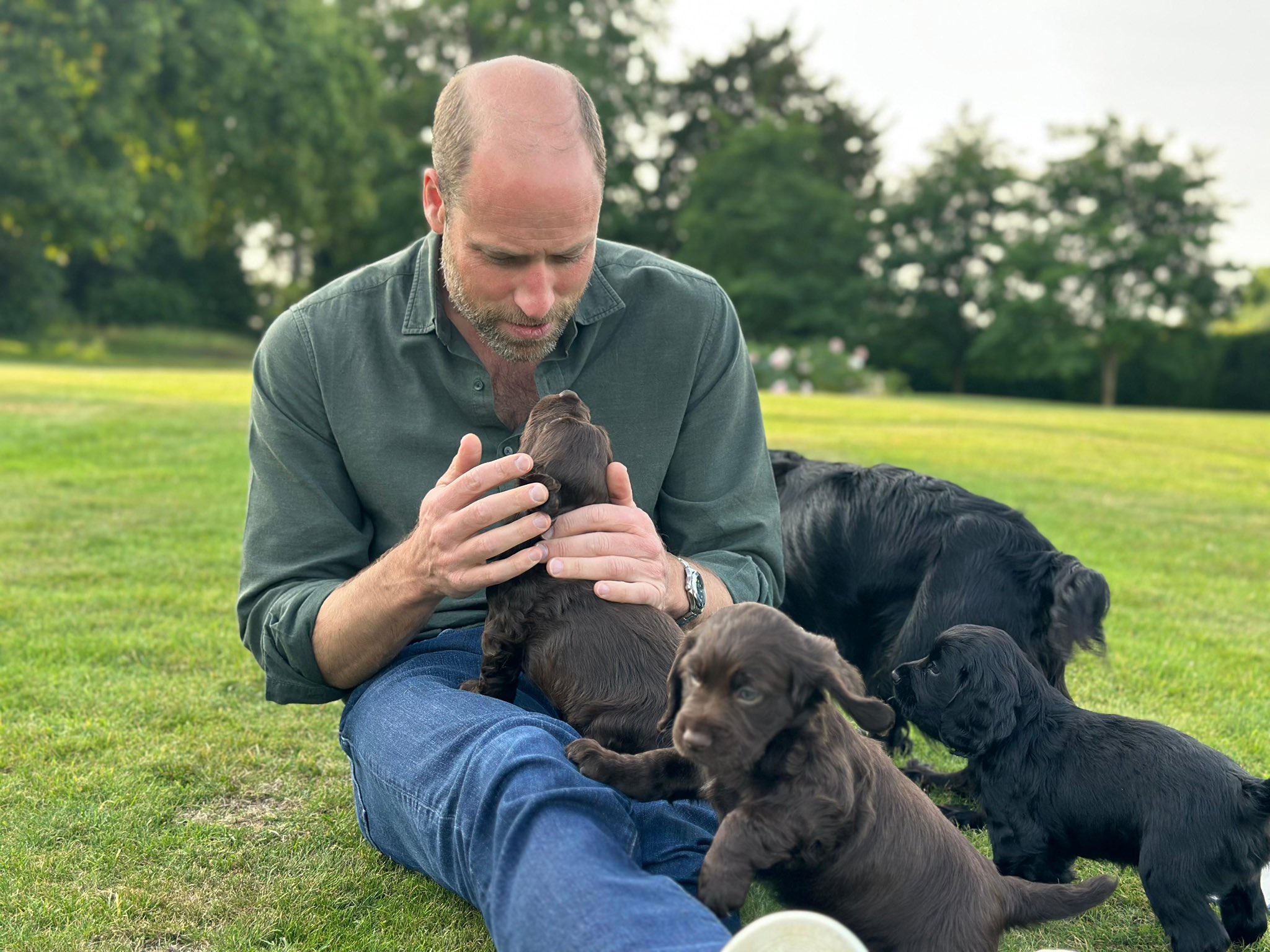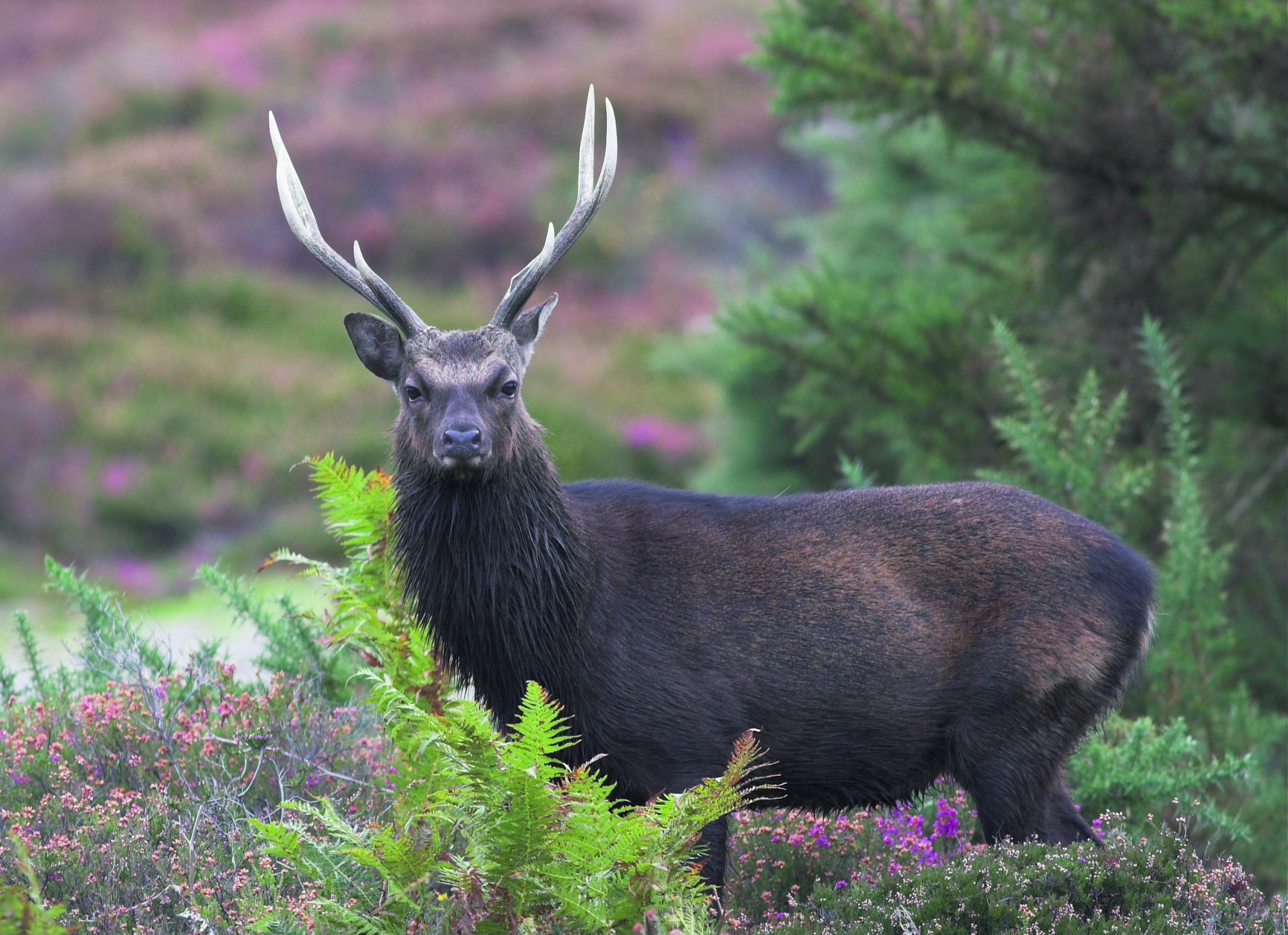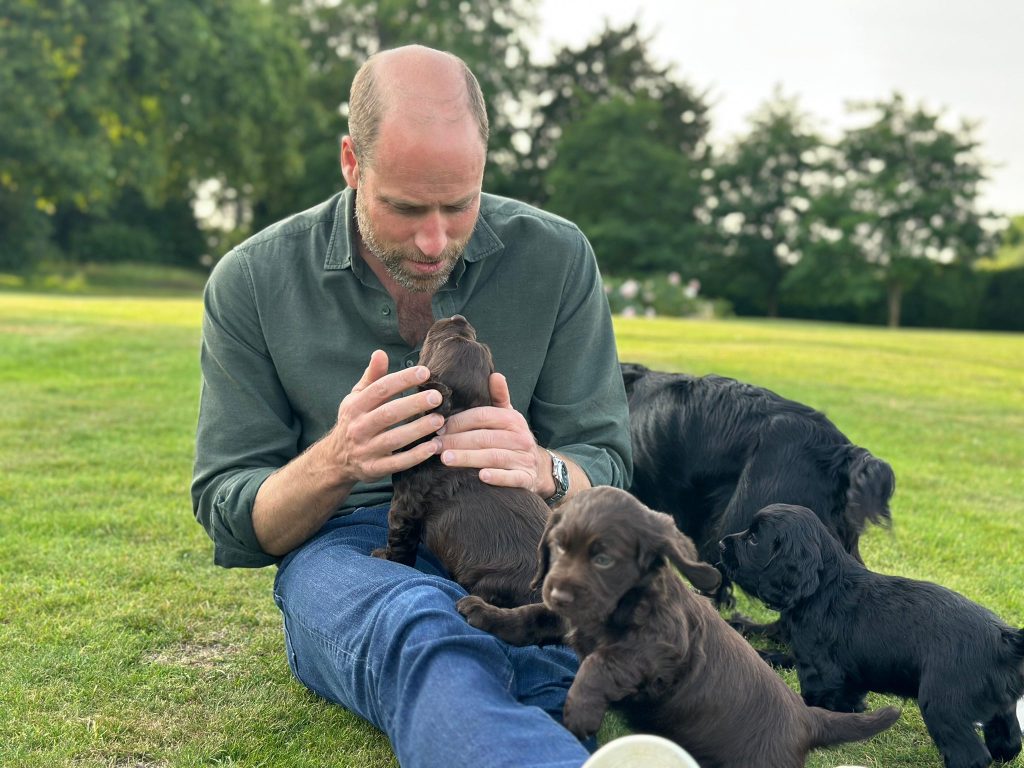News
Black grouse – one of the most distinctive birds
Would you like to speak to our readers? We offer sponsored articles and advertising to put you in front of our audience. Find out more.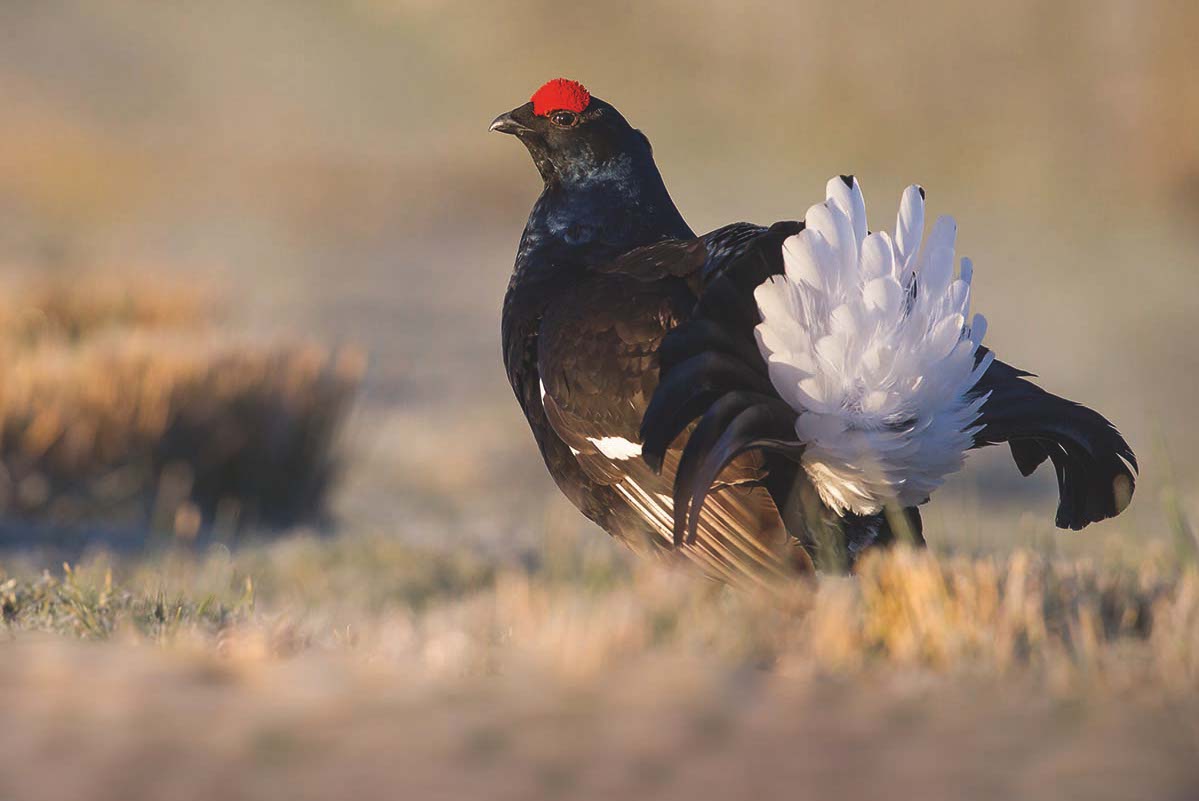 Early morning sunlight on black grouse.
Early morning sunlight on black grouse.
The male black grouse Lyrurus tetrix, or blackcock, must be one of our most handsome birds. About the size of a hen pheasant, it has a distinctive red wattle above the eye and predominantly black plumage tinted with a deep blue on the neck and back. Contrasting sharply with this are the white wing stripe and undertail feathers that are especially obvious when the lyre-shaped tail is fanned out in display.
The female, or greyhen, is about two-thirds smaller and drab in comparison, with only a forked tail. Its grey-brown plumage has an intricate barred pattern that allows it to blend easily with her surroundings, or when in the nest.
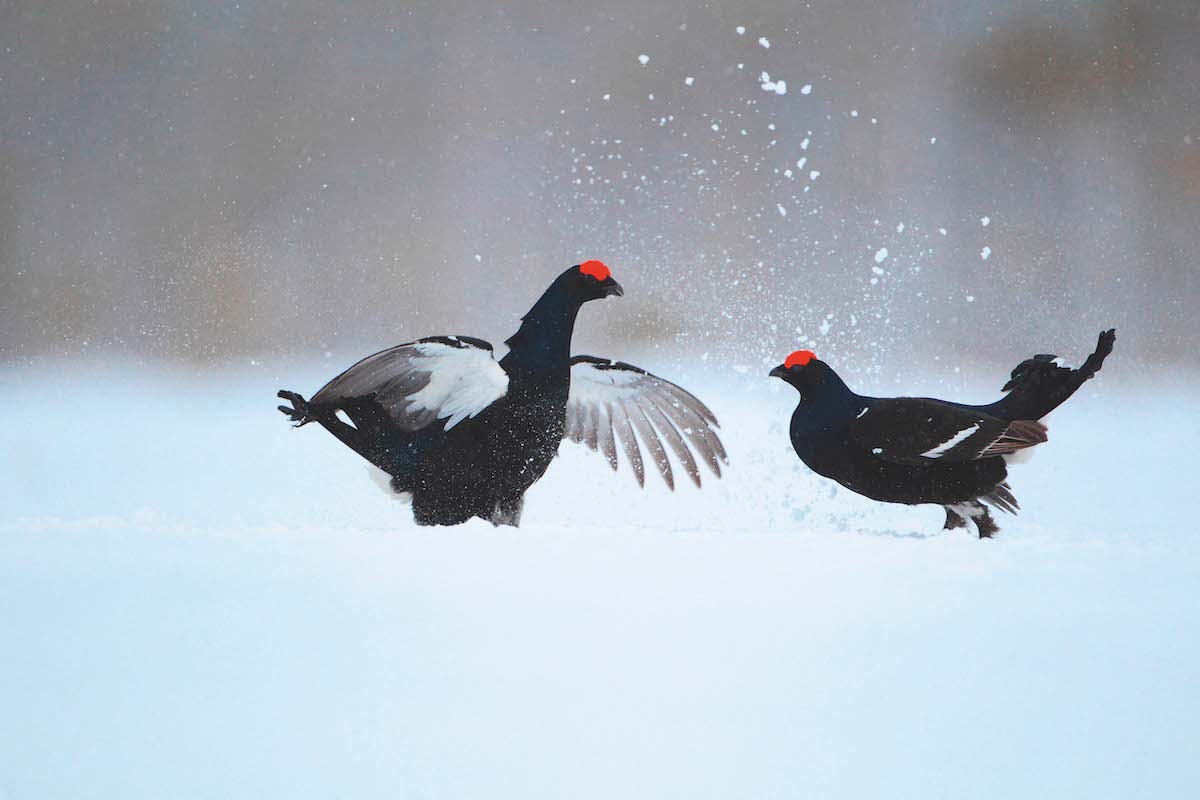
The most dominant of the blackcocks will win the attention of the greyhens
Habitat
The best place to look for the black grouse is in upland areas of traditional farmland or moorland close to forestry or scattered trees. During the summer months males are often solitary, but broods tend to remain together. All sexes can form larger packs during the winter, usually of the same sex and often frequenting open birch woods. Unusually for a gamebird, they fly high, taking long glides in-between rapid wing beats, and can be most visible at dawn and dusk. They have been known to hybridise with capercaillie, red grouse and pheasants.
The black grouse lek ranks among one of the greatest of nature’s spectacles. Each spring, between early April and mid-May, the blackcocks will gather at their traditional sites where they go on to display to gain dominance over each other, fanning their tails, inflating their necks and posturing as they call with a chuckling, bubbling coo. The displays start at early dawn, and they reach their climax shortly after sunrise when the greyhens will arrive and gather around the displaying males, looking for the most dominant ones that occupy the centre of the group to be their eventual mates. Before sunset, the blackcocks will gather together once again in order to resume their posturing and competing.
In Europe, a lek containing 40 birds is considered to be a large one, but as many as 200 have been recorded in Russia. Once a successful mating has been completed, the greyhen flies off to find a nesting site, as the blackcock plays no part in incubating eggs or raising the young.
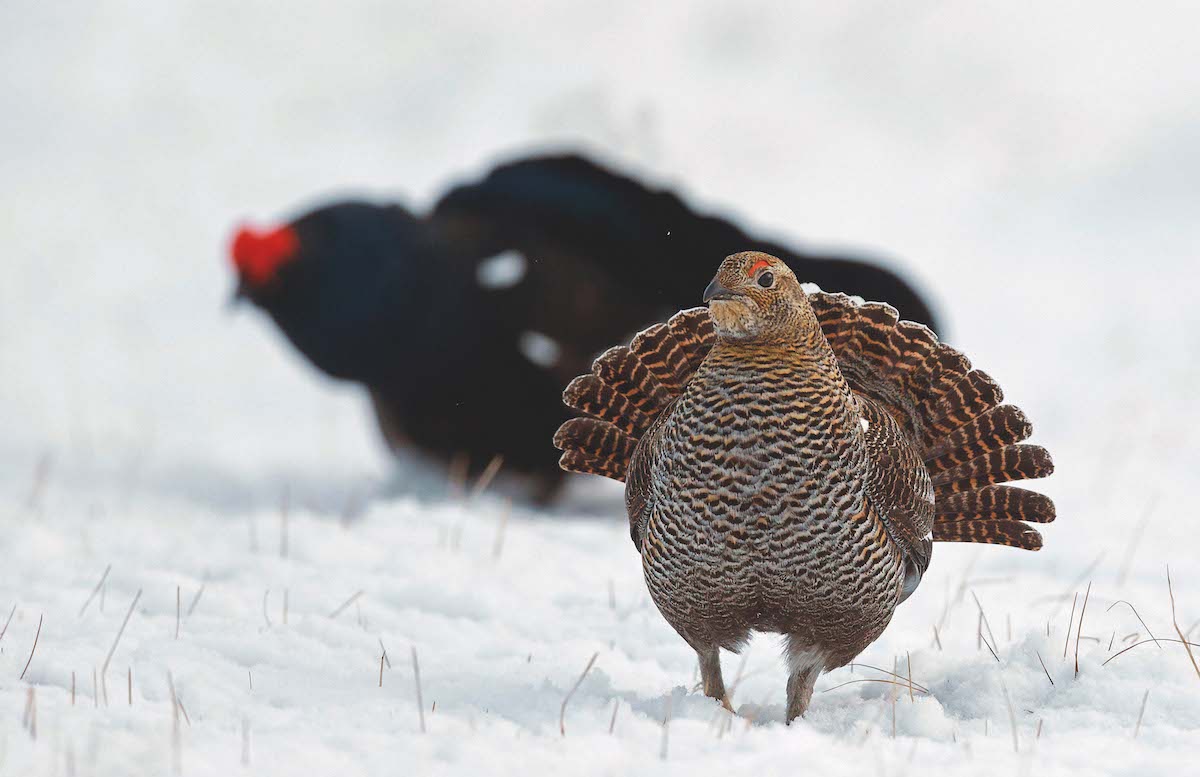
Greyhens leave after mating, as blackcock don’t raise the chicks
Populations
The black grouse has declined heavily over the past century in Europe, where it was once widespread, though it is still abundant further east. It was common across most of Britain as far south as Hampshire and Cornwall, but there has been a similar decline here and the species has retreated to the upland areas of Scotland and Northern England. A very small population also remains in North Wales.
National counts during the 1990s gave an estimated population of 25,000 displaying blackcocks; by 2005 there were only 5,100, two-thirds of which were in Scotland. Today the RSPB estimates a total breeding population of just 4,800 birds of both sexes. The decline in numbers is variously attributed to changes in land use and forestry practices, overgrazing, predation and reductions in the numbers of the invertebrates on which growing chicks are so dependent for the first few weeks of their lives. Chicks are also very susceptible to the weather, and a cold, wet June can be disastrous for young broods.
Despite the decline of the black grouse, there is still an open season for them. Although this includes restricted dates for Devon, the New Forest and Somerset, these are an anachronism, as the species has disappeared in those parts. The GWCT recommends that, while the black grouse may be legal elsewhere, shooting should only take place where stocks are sustainable. Only cocks should be targeted, shooting should not take place until they finish moulting in October or November, and no more than 15% of the spring stock of cock birds should be shot. Guns must distinguish between greyhens and red grouse.
The tail feathers of the blackcock have long been associated with Highland dress, and are a popular adornment for hats such as the glengarry bonnet or balmoral and tam-o’-shanter cap. They were worn on the dress headgear of the British Army’s Royal Scots and King’s Own Scottish Borderers since 1904, and feathers from sustainable stocks feature on the dress glengarries of the Royal Regiment of Scotland.
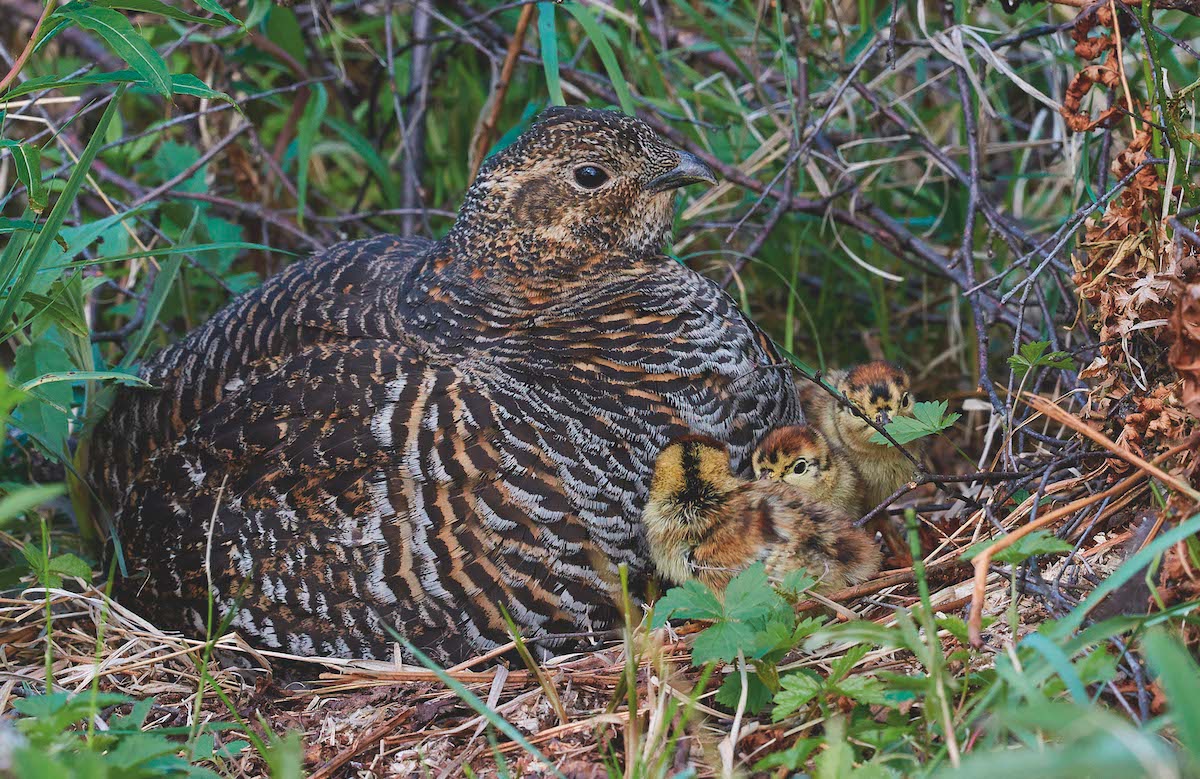
A typical greyhen nesting site
Black grouse quick facts
- Distribution Widespread across Scandinavia (extinct in Denmark), Russia and northern Asia. Isolated populations in Belgium, France, the Netherlands and Germany.
- UK distribution: Found in much of Scotland, the north of England and some upland areas of North Wales. It is not present in Northern Ireland.
- IUCN Red List status: Least Concern, though numbers decreasing.
- Habitat: Conifer and deciduous woodland, heath, moor, grassland and farmland.
- Food: Catkins, shoots, conifer needles and cones in winter, switching in spring to berries, buds, seeds, flowers and shoots of shrubs and heather. Chicks rely mostly on invertebrates.
- Breeding: Male birds congregate in lekking areas to display in competition; females choose the most dominant males in the centre of the lekking site.
- Nesting: Nests are sited in dense vegetation at the base of a tree, between roots or under branches. A hollow is scraped out of the ground and lined with grasses, leaves, moss, sticks and feathers. Only the female incubates and raises the chicks, capable of flight after two weeks.
- Clutch size: Six to 11 eggs.
- Incubation time: 25 to 27 days.
- Length (average): Zero to 55cm. The females are noticeably smaller.
- Wingspan (average): 65 to 80cm.
- Weight (average): 1.2kg (male); 930g (female).
- Lifespan (average): About five years.
- Flight speed: Around 62mph.
- Shooting seasons: England, Wales and Scotland; 20 August to 10 December (for Devon, the New Forest and Somerset 1 September to 10 December, see main text).
Related articles
News
PETA attacks royal couple for breeding cocker pups
The Prince and Princess of Wales have faced criticism from animal rights group PETA after they had a litter of puppies
By Time Well Spent
News
Farmers launch legal review against Reeves’s farm tax
Chancellor Rachel Reeves faces a judicial review over inheritance tax reforms that could force family farms out of business
By Time Well Spent
Manage Consent
To provide the best experiences, we use technologies like cookies to store and/or access device information. Consenting to these technologies will allow us to process data such as browsing behavior or unique IDs on this site. Not consenting or withdrawing consent, may adversely affect certain features and functions.
Functional Always active
The technical storage or access is strictly necessary for the legitimate purpose of enabling the use of a specific service explicitly requested by the subscriber or user, or for the sole purpose of carrying out the transmission of a communication over an electronic communications network.
Preferences
The technical storage or access is necessary for the legitimate purpose of storing preferences that are not requested by the subscriber or user.
Statistics
The technical storage or access that is used exclusively for statistical purposes.
The technical storage or access that is used exclusively for anonymous statistical purposes. Without a subpoena, voluntary compliance on the part of your Internet Service Provider, or additional records from a third party, information stored or retrieved for this purpose alone cannot usually be used to identify you.
Marketing
The technical storage or access is required to create user profiles to send advertising, or to track the user on a website or across several websites for similar marketing purposes.

